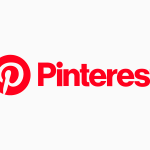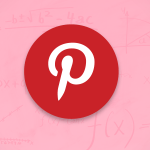Introduction.
When it comes to making money online, affiliate marketing has become a popular way to earn an income without holding any products or handling customer service.
Pinterest, a visual search engine with over 400 million active users each month, is a surprisingly powerful platform for affiliate marketers.
People on Pinterest are looking for ideas, inspiration, and products to buy. This makes it an ideal place to share affiliate links in a way that feels natural and helpful.
So, why should you focus on creating pins for affiliate marketing? Well, Pinterest users often come with a shopping mindset.
They’re looking for solutions and are open to discovering new products. For affiliates, this is gold because it means people are not only interested but also ready to click on links that bring them closer to buying.
By creating visually appealing and strategic pins, you can tap into Pinterest’s potential, driving traffic to affiliate products and earning commissions as users purchase through your links.
This article will cover everything you need to know about creating effective affiliate pins on Pinterest. From choosing the right images and crafting engaging copy to linking to affiliate products in a way that meets Pinterest’s guidelines, I’ll walk you through the essential steps.
I’ll also share tips for tracking your results, optimizing your strategy, and growing your reach over time. And at the end, I’ll tackle some common questions about Pinterest affiliate marketing.
Ready to get started? Let’s dive into the details!
Why Pinterest is a Goldmine for Affiliate Marketing
Unlike other social media, Pinterest functions as a search engine, meaning people often use it to find specific ideas or products rather than simply scrolling through for entertainment.
In fact, studies show that 87% of Pinterest users have bought something because of Pinterest, and 97% use Pinterest for shopping inspiration.
This unique setup makes Pinterest an ideal place for affiliate marketing, as people using the platform are actively looking for recommendations and products.
By creating pins with affiliate links, you’re reaching an audience that is already in a shopping mindset.
What Makes a Good Affiliate Pin?
- High-Quality Visuals: Pinterest is a visual platform, so your pin’s image quality matters a lot. High-resolution photos and graphics catch users’ attention more than low-quality or generic images.
- Engaging Text Overlay: Adding text to your images helps convey your message quickly. Use clear, easy-to-read fonts that highlight the value or benefit of the product.
- Keyword-Rich Description: Like Google, Pinterest uses keywords to show your content to the right audience. Use relevant keywords in your pin description so your pins appear in search results.
- Call-to-Action (CTA): A CTA encourages people to take action. Phrases like “Shop Now,” “Get the Look,” or “Find Out More” can prompt users to click through to your affiliate link.
- Clear Link to Affiliate Product: Make sure your affiliate links are accurate and lead users to a page where they can buy the product or learn more about it. If your link is confusing or misleading, it could damage trust and hurt your click-through rate.
How Do I Create Pins On Pinterest For Affiliate Marketing?
Here’s a step-by-step guide to creating pins that will drive affiliate clicks.
1. Set Up a Pinterest Business Account.
If you’re serious about affiliate marketing on Pinterest, a business account offers valuable analytics and the ability to run ads. With Pinterest Analytics, you’ll see which pins perform best, giving you insights into what’s resonating with your audience.
2. Design Pins That Stand Out.
To get started with your pin design, tools like Canva offer pre-made Pinterest templates that you can customize for your products. Use bright colors, readable fonts, and clear images that showcase the product.
3. Add Keywords to Your Pin Title and Description.
To get your pin seen, add keywords that describe your product or its benefits. Think of terms your audience might search for—whether it’s “best skincare for dry skin” or “cute kitchen organization ideas.” Keep your title concise and to the point. In the description, include a bit more detail and be sure to use your main keywords naturally.
4. Include a Call-to-Action.
Add a call-to-action to your pin description to encourage users to click. Words like “discover,” “learn,” and “shop” are action-oriented and can increase your click-through rate.
For example, if you’re promoting a cooking tool, you might say, “Check out this must-have tool for home chefs!”
5. Link to Your Affiliate Product or Page.
Once your pin design and description are ready, add your affiliate link. You can link directly to the product page or to a blog post where the affiliate product is featured. Just make sure the link is relevant and helpful.
6. Publish Consistently.
Pinterest rewards consistent pinners. Aim to post new pins regularly, ideally daily or a few times a week. This keeps your profile active and helps your pins reach more people over time.
7. Analyze Your Results and Refine.
Check your Pinterest Analytics to see which pins are getting the most clicks, saves, and impressions.
Over time, you’ll notice trends in which styles, colors, and products work best. Use this information to refine your strategy and continue creating pins that attract more clicks.
Tips for Success
- Use Tailwind for Scheduling: Tailwind is a Pinterest-approved scheduling tool that allows you to plan out your pins in advance. You can also join Tailwind Tribes, groups where pinners in similar niches share each other’s content to reach a wider audience.
- Keep Up with Pinterest Guidelines: Pinterest has policies around affiliate links, and it’s essential to keep up with them. Avoid using shortened links (like Bit.ly), and always make sure your pins follow the platform’s policies.
- Test Different Styles and Layouts: Try different layouts, colors, and types of pins (like carousel pins) to see what resonates with your audience.
- Track and Optimize: Look at your click-through rates and impressions to see what’s working. Focus on the pins that drive the most affiliate clicks and try to replicate their style or design for other products.
FAQs
Can I Use Affiliate Links Directly on Pinterest?
Yes, Pinterest allows direct affiliate links. However, some affiliate programs don’t permit this, so double-check your program’s terms before posting.
Is There a Limit to How Many Pins I Should Post?
There’s no hard rule, but Pinterest generally recommends posting fresh content regularly. Aim for a balance between quality and quantity; start with one pin per day, then adjust based on your results.
How Long Does It Take to See Results?
Results vary, but Pinterest marketing is a long-term strategy. While some people see traffic within a few weeks, it might take a few months to build steady traffic. Consistency and optimization are key.
Do I Need a Blog to Succeed with Pinterest Affiliate Marketing?
No, you can link directly to affiliate products. That said, having a blog or website can be helpful, as it allows you to create more content around your affiliate products and potentially earn additional revenue through ads or other affiliate programs.
Conclusion
Creating pins for affiliate marketing on Pinterest can be a rewarding way to build an online income, especially if you enjoy designing visuals and sharing helpful product recommendations.
With the right strategy, your pins can drive consistent traffic to affiliate products, generating clicks and commissions over time.
Now that you know the basics, why not give it a try? Start designing, pinning, and tracking your results, and see how Pinterest can work for your affiliate marketing goals.
Are there any specific questions you still have about creating effective affiliate pins on Pinterest?





GIPHY App Key not set. Please check settings